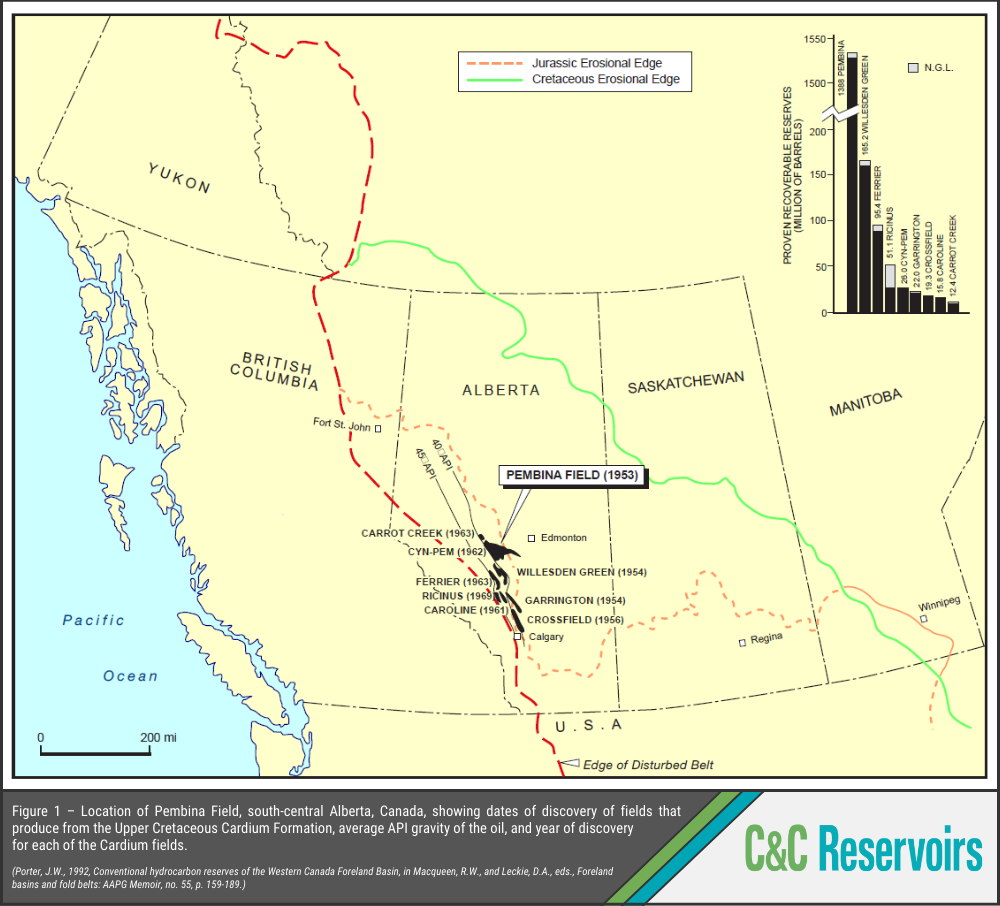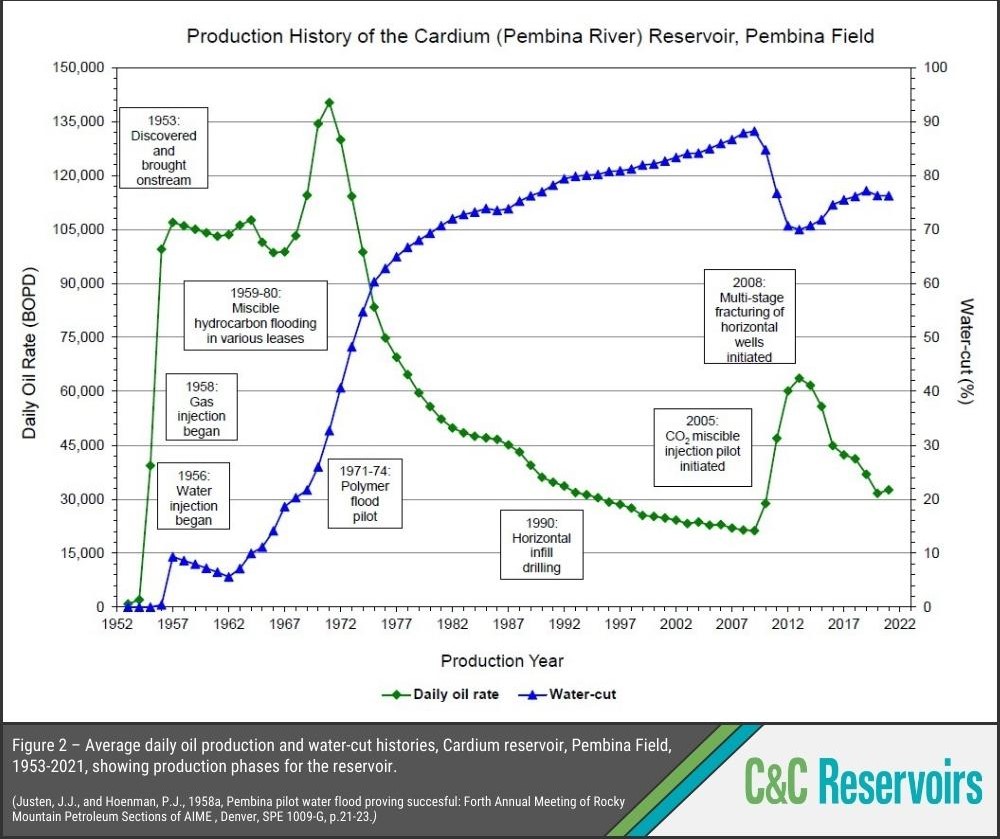The Pembina Field
This week’s Analogue Spotlight focuses on the unsuccessful improved recovery methods used in the Pembina Field (Canada). It is the second-most areally extensive conventional oilfield in the world, covering 628,000 ac, and was discovered and brought onstream in 1953.
In the early 1990s, 18 horizontal wells were drilled in the Upper Cretaceous Cardium reservoir, with most targeting poorly swept, lower-permeability areas containing bypassed oil. Only a few wells completed in high permeability-thickness conglomerate and clean sandstone intervals were successful, the others performing poorly.
A polymer injection pilot was undertaken on two adjacent 160 ac areas in 1971-74. However, this technique proved unsuccessful in reducing water channelling. The pilot failed to come close to attaining the incremental oil recovery of 4.8% of STOIIP that was forecast due to polymer breakthrough in the high-permeability conglomerates, with only 6% of their pore volume contacted by the polymer.
Despite these unsuccessful pilots, the Pembina Field has undergone several other improved recovery methods that have yielded more successful results, and the field has continued to produce oil for over half a century.
The Digital Analogue Knowledge System (DAKS™) contains many global oil and gas analogues specifically focused on heavy oil fields. Use these analogues to benchmark your own field, and delve into C&C Reservoirs Reservoir Evaluation Reports to discover best practices from top performing reservoirs that can be applied to your own assets.


